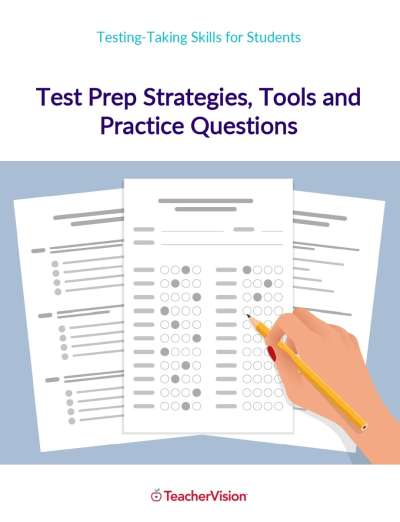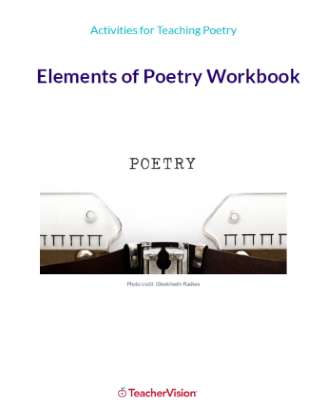The connections between art and math are strong and frequent, yet few students are aware of them. This geometry lesson is integrated with history and art to engage even the most math resistant of your students and to enlighten everyone about M. C. Escher's work in tessellations.
SUGGESTED TIME ALLOWANCE
40 minutes
OBJECTIVES
Students will:
- follow precise, multi-step directions.
- have the opportunity to go beyond the immediate lesson and apply artistic creativity, or learn more about M. C. Escher, his art, or the contributions he made to mathematics.
- be able to understand and define the following terms: tessellation, polygon, angle, plane, vertex, and adjacent.
- create a concrete model of a tessellation.
MATERIALS
- Scissors, tape, 11" x 14" paper, crayons, black fine-tip pen
- Worksheets: Creating Tessellations
PROCEDURES
1. Introduce key vocabulary words: tessellation, polygon, angle, plane, vertex and adjacent. Ask students to tell you what they know about the word tessellation. Discuss the three basic attributes of tessellations:
- First, they are repeated patterns. Ask students to find examples of repeated patterns in the room. Generate a list of the words one could use to describe these patterns. Tell students that while those are repeated patterns, only some are tessellations because tessellations are a very specific kind of pattern.
- Second, tessellations do not have gaps or overlaps. If students have pointed to a pattern in the room that has a gap or an overlap in it, point out that it does not fit the definition of a tessellation.
- Third, tessellations can continue on a plane forever. Define plane (use a concrete example in the room) and show students how the pattern could continue on that plane if it were to go on beyond the confines of the building (e.g., it could continue as a pattern on the ceiling without any gaps or overlaps even if the ceiling were to continue forever, far beyond the walls of your school).
2. Provide students with the Shapes worksheet within the Tessellations packet, which has a copy of a square, a rectangle,a rhombus, and a hexagon on it. (These were chosen because each tessellates.) Using the Student Directions worksheet, demonstrate how to transform a shape into something that will also tessellate.
ASSESSMENT
- Note how the students follow multi-step directions as well as how they cut and trace (manual dexterity).
- To assess an understanding of the vocabulary, create a quiz, or ask them to perform another project that requires an understanding of the terms. (For example, ask them to tell you who is adjacent to them or ask them to label the top right vertex of a shape you provide.)
- Have your students teach another class how to tessellate.
EXTENSION ACTIVITIES
- Younger students can discover for themselves what shapes tessellate using pattern blocks and lots of space. They will notice that only some, not all, can make a pattern that would fit all three of the criteria.
- Encourage students to experiment to see if they can discover other ways to make shapes tessellate.
- Teach students about the history of tessellations and show examples. If you can have students point out the three features of tessellations, it will help to make their understanding more concrete and it will also review the definition. Tessellations have been used all around the world for many years. The earliest tessellations we can find come from Islamic art circa 3000 BC. There are examples from medieval European art as well (e.g., stained glass patterns).
- Use Web resources to extend the lesson:
- Enter your class in one of several online tessellation contests.
- Look at American folk art that uses tessellations (such as quilts).
- Tessellations were popularized by M. C. Escher.
- Research M. C. Escher, Penrose, and other "Recreational mathematicians."
- Enter your class in one of several online tessellation contests.
Discover a geometry lesson that is integrated with history and art to engage even the most math resistant of your students, and to enlighten everyone about M. C. Escher's work with tessellations.




